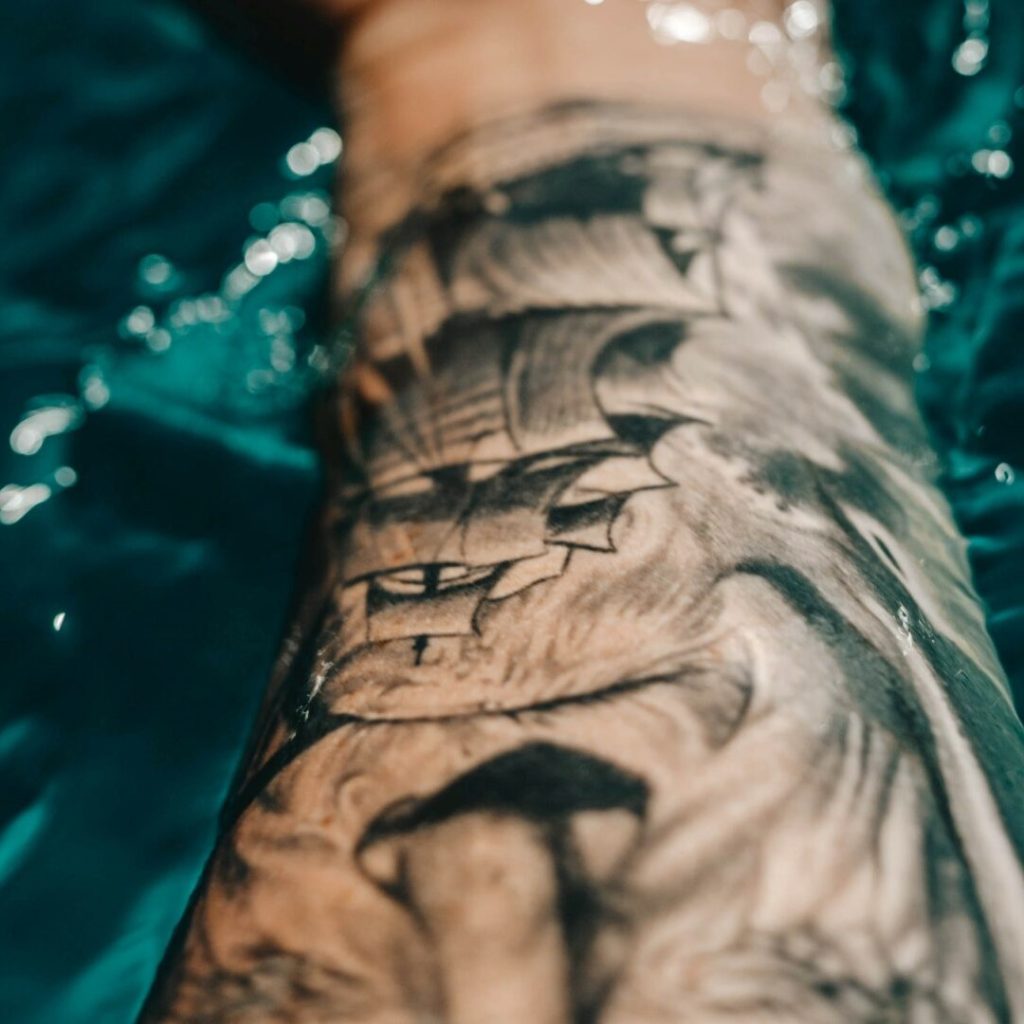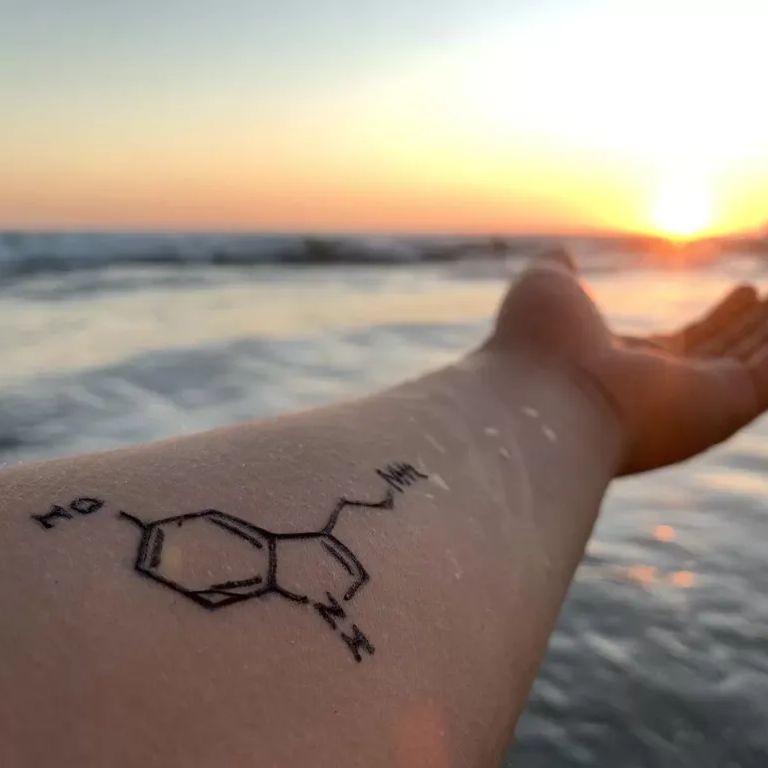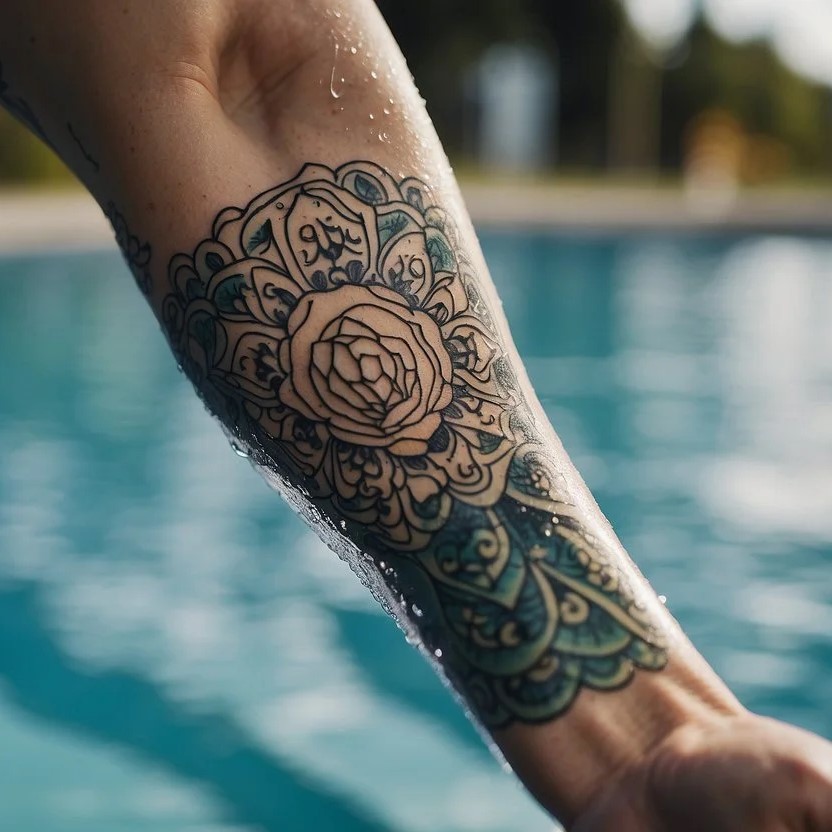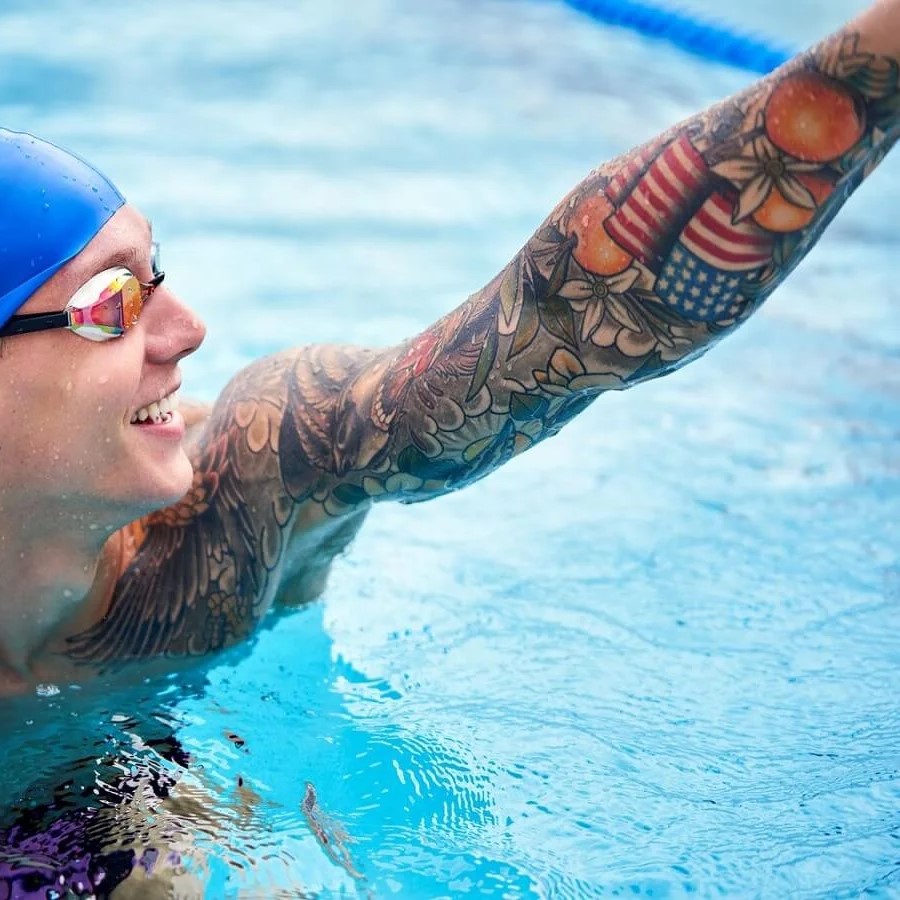Getting a tattoo is an exciting experience, but protecting it afterward is crucial to ensure it heals properly and retains its vibrancy. One common concern is how to waterproof a tattoo for swimming. Whether you’re planning a beach vacation or enjoy regular swims, understanding how to safeguard your new ink from water exposure is essential. In this guide, we will explore effective methods to waterproof your tattoo, ensuring it remains intact and healthy while you enjoy the water.
 Why Waterproofing Your Tattoo is Important
Why Waterproofing Your Tattoo is Important
When it comes to new tattoos, protecting them is essential. Swimming with a fresh tattoo can lead to issues. Waterproofing your tattoo helps prevent damage and ensures proper healing. Let’s explore the risks and potential harm that swimming can cause.
Risks of Swimming with a Fresh Tattoo
Fresh tattoos are essentially open wounds. Exposing them to water, especially pools, lakes, or oceans, can introduce bacteria. This increases the risk of infections. Chlorinated pool water can irritate the skin and slow the healing process. Similarly, saltwater can cause dryness and stinging. These factors collectively put a fresh tattoo at risk.
Potential Damage to Tattoo Healing Process
Swimming too soon can lead to fading or distortion of your tattoo’s design. Soaking your tattoo softens scabs, which can fall off prematurely, affecting color retention. Excess water can also trap bacteria, leading to redness, swelling, or even pus formation. Proper waterproofing minimizes these risks and helps maintain tattoo quality during healing.
How Long You Should Wait Before Swimming with a New Tattoo
Swimming with a new tattoo requires caution and proper timing. Healing time varies by individual and tattoo size. Understanding the healing process is essential to protect your tattoo.
Recommended Healing Time for Tattoos
Most tattoos need at least 2 to 4 weeks to heal completely. During this period, your skin forms a protective layer over the tattoo. Deeper layers may still be healing, even if the surface appears fine. Waiting ensures your tattoo is less vulnerable to water-related damage. Consult your tattoo artist for specific guidelines based on your design and placement.
Signs Your Tattoo Has Fully Healed
Knowing when your tattoo is fully healed is crucial before swimming. Here are some signs:
- No Scabs or Flaking: All scabs and flakes should have fallen off naturally.
- No Redness or Swelling: The area should look and feel like your regular skin.
- No Itching or Tenderness: Fully healed tattoos should not feel itchy or sore.
- Skin is Smooth: The skin over your tattoo should be smooth and consistent.
If any of these signs are missing, avoid swimming to protect your tattoo’s quality. Always prioritize proper healing over water activities.
 Waterproofing Methods for Tattoos
Waterproofing Methods for Tattoos
How to waterproof a tattoo for swimming? When planning to swim with a tattoo, proper waterproofing is critical. This protects the tattoo and speeds up healing. Below are two effective methods to waterproof your tattoo.
Using a Waterproof Tattoo Bandage
A waterproof tattoo bandage is a reliable option. These bandages lock out water and bacteria. They come in adhesive sheets that cover the tattoo completely. Here’s how to use one effectively:
- Clean the Tattoo Area: Wash the tattoo with antibacterial soap and pat it dry with a clean towel.
- Choose the Right Size: Select a bandage that fully covers the tattoo, with extra space around the edges.
- Apply Firmly: Peel off the adhesive backing and press the bandage onto the skin. Smooth out wrinkles to ensure a tight seal.
- Remove Carefully After Swimming: Gently peel off the bandage. Wash and moisturize the tattoo once removed.
These bandages can often be used for multiple hours, making them perfect for swimming sessions.
Applying a Specialized Waterproof Sealant
Waterproof tattoo sealants are another useful option. These products create a barrier on the skin. Follow these steps to apply a sealant for swimming:
- Start with Clean Skin: Clean and dry the tattoo thoroughly.
- Apply the Sealant in Thin Layers: Spread a thin, even coat over the tattooed area.
- Let It Dry: Wait for the sealant to fully dry before entering the water. This usually takes a few minutes.
- Reapply If Needed: For extended swimming sessions, reapply the sealant every few hours.
Sealants are lightweight, making them comfortable to use. However, they may not be as durable as tattoo bandages.
These two waterproofing methods can safeguard your tattoo during swimming activities. Always prioritize proper application for optimal protection.
 Precautions Before Entering Water
Precautions Before Entering Water
How to waterproof a tattoo for swimming? Swimming with a tattoo requires proper preparation to avoid complications. Taking precautions ensures your tattoo stays safe and heals well.
Cleaning and Preparing Your Tattoo
Before entering water, clean your tattoo thoroughly. Use antibacterial soap and lukewarm water to wash the area. Pat it dry gently with a clean towel to avoid irritation. Ensure your tattoo is free of scabs, dirt, or residue. Proper cleaning reduces the risk of infections from waterborne bacteria.
Apply a waterproof bandage or sealant before swimming. These products create a barrier to shield your tattoo. Check that the bandage is securely attached and fully covers the tattoo. This step prevents water from seeping in and harming the healing process.
Avoiding Extended Water Exposure
Limit your time in the water to minimize risks. Prolonged exposure can increase irritation or soften scabs. Softened scabs may fall off, affecting your tattoo’s appearance and color. Keep swimming sessions short to protect the healing tissue.
Avoid staying in chlorinated pools, hot tubs, or saltwater for long periods. These can dry out or irritate your tattoo. After leaving the water, remove the waterproof covering immediately. Wash and moisturize your tattoo to maintain hydration and hygiene.
By cleaning your tattoo and avoiding extended water exposure, you reduce the chances of damage. These steps help keep your tattoo vibrant while it heals.
Swimming Safely with a Tattoo
Swimming safely with a tattoo requires extra care. Following best practices minimizes damage and keeps your tattoo intact. Understanding what activities to avoid ensures your tattoo heals properly while letting you enjoy water moments responsibly.
Best Practices for Minimizing Damage
- Limit Swimming Time: Keep swimming sessions short to avoid extended water exposure.
- Use Waterproof Protection: Always apply a waterproof tattoo bandage or sealant before swimming.
- Choose Safe Water Environments: Swim in clean pools or areas where water quality is regulated.
- Avoid Hot Water: Do not swim in hot tubs or heated pools, as they may irritate tattoos.
- Hydrate Post Swimming: Moisturize your tattoo after swimming to prevent dryness and cracking.
- Monitor Healing: Check your tattoo regularly for signs of irritation or damage after swimming sessions.
By adhering to these practices, you can enjoy swimming while shielding your tattoo from harm.
Activities to Avoid While Swimming
- Avoid Diving: Sudden water pressure can harm tender healing skin.
- Skip High-Pressure Water Areas: Avoid water slides or areas with strong currents or jets.
- Do Not Rub the Tattoo: After swimming, gently pat your tattoo dry instead of rubbing.
- Stay Away from Unclean Waters: Avoid lakes or oceans, as they may contain bacteria harmful to your tattoo.
Protecting your tattoo while in the water ensures the design stays sharp and healthy during recovery.
What to Do After Swimming with a Tattoo
Taking care of your tattoo after swimming is crucial to maintain its quality and support healing. Proper post-swimming care reduces infections, irritation, and dryness.
Cleaning and Moisturizing Your Tattoo
- Wash with Antibacterial Soap: Use mild antibacterial soap and lukewarm water to clean your tattoo immediately.
- Avoid Scrubbing: Gently pat the area dry with a clean, soft towel. Do not rub or scrub the tattoo.
- Moisturize: Apply a tattoo-friendly moisturizer to keep the skin hydrated and prevent dryness.
- Skip Strong Chemicals: Avoid harsh products like alcohol-based cleansers, which can irritate the tattoo.
These steps help maintain hydration and cleanliness, ensuring your tattoo stays vibrant and healthy.
Checking for Irritation or Infection
- Look for Redness: Check if any redness or swelling has worsened after swimming.
- Monitor for Pus or Odor: Pay attention to signs of infection, such as pus discharge or a foul smell.
- Test for Tenderness: Feel the area to see if it’s unusually sore or itchy.
- Consult a Professional: If irritation or infection persists, reach out to your tattoo artist or doctor for advice.
- Avoid Re-Exposure: Refrain from swimming again until the area fully recovers.
Regular inspection ensures you catch problems early and protect your tattoo during the healing process.
 Common Mistakes to Avoid
Common Mistakes to Avoid
Understanding common mistakes can help protect your tattoo and ensure proper healing. Avoid these errors to keep your tattoo safe and vibrant.
Using Harsh Chemicals on Your Tattoo
Using harsh chemicals on a tattoo can harm its healing process. Avoid products with alcohol, hydrogen peroxide, or strong soaps. These chemicals can dry out the skin and irritate the tattoo. Dryness leads to cracking and flaking, which damages the design.
Instead, use tattoo-safe products. Mild antibacterial soap and fragrance-free moisturizers are ideal choices. These products keep the skin hydrated and clean without causing irritation. Always avoid scrubbing the tattoo to prevent peeling or distortion.
Swimming Too Soon After Getting Tattooed
Swimming too soon puts your tattoo at risk of infection and damage. New tattoos are open wounds that need protection. Water in pools, oceans, or lakes can introduce bacteria, slowing healing or causing infections.
Additionally, soaking a fresh tattoo softens scabs. Premature scab removal reduces color retention and creates patchy designs. Chlorinated or saltwater exposure can dry and irritate the skin, harming the tattoo further.
Wait at least 2 to 4 weeks before swimming. Ensure your tattoo is fully healed before water activities. Signs of healing include no scabs, redness, or itching, and smooth, consistent skin. Patience protects your tattoo and ensures its longevity.
Alternatives to Swimming with a Tattoo
If you’ve recently gotten a tattoo, avoiding swimming is crucial for proper healing. During this time, engaging in safe and enjoyable dry activities is a great alternative. Staying active without water-based activities ensures your tattoo remains protected.
Dry Activities to Consider During Healing
Avoiding swimming doesn’t mean you have to sit idle. Here are some dry activities to consider:
- Walking or Hiking: Enjoy trails or parks for light exercise and fresh air.
- Yoga or Stretching: Practice indoor or outdoor yoga to stay active and relaxed.
- Home Workouts: Use bodyweight exercises like squats, push-ups, or light weights for a good workout.
- Biking: Bike rides are a low-impact activity that keeps you moving.
- Reading or Writing: Take this time to dive into books or start journaling.
- Creative Activities: Explore crafts, painting, or learning a new skill like playing music.
- Outdoor Sports (Non-Water): Try activities like badminton, frisbee, or tennis, avoiding excessive sweating near your tattoo.
These activities allow you to stay active while keeping your tattoo safe and undisturbed.
Tips for Staying Active Without Water-Based Activities
Here are additional ways to remain engaged without swimming during tattoo healing:
- Focus on Low-Sweat Activities: Avoid intense exercise that could cause excessive sweating.
- Cover Your Tattoo: Use breathable clothing to shield your tattoo from dirt and irritation.
- Keep Sun Exposure Minimal: Protect your tattoo with loose clothing if you’re outdoors.
- Engage in Social Activities: Spend quality time with family or friends in non-water settings.
- Try Light Workouts: Opt for stretches, pilates, or light yoga to stay fit.
By choosing these options, you can remain active while ensuring your tattoo heals properly. Always prioritize protecting your tattoo to maintain its vibrant design.
 Frequently Asked Questions About Waterproof Tattoos for Swimming
Frequently Asked Questions About Waterproof Tattoos for Swimming
Addressing common questions can provide further clarity on how to waterproof a tattoo for swimming effectively.
Can I Swim Immediately After Getting a Tattoo?
No, you should wait until your tattoo is fully healed before swimming. Swimming too soon can introduce bacteria and chemicals that may cause infections or damage the tattoo.
How Long Should I Wait Before Swimming with a Tattoo?
Typically, you should wait about two to four weeks after getting a tattoo to ensure it has healed completely. However, consult your tattoo artist for personalized advice based on your healing process.
What Should I Do if My Tattoo Gets Wet Before It’s Healed?
If your tattoo gets wet before it’s fully healed, gently pat it dry with a clean towel and reapply a thin layer of ointment. Monitor the area for any signs of irritation or infection and contact your tattoo artist if you notice any unusual symptoms.
Conclusion: Mastering How to Waterproof a Tattoo for Swimming
Learning how to waterproof a tattoo for swimming is essential for anyone looking to protect their new ink while enjoying water activities. By understanding the tattoo healing process, preparing adequately, and utilizing effective waterproofing techniques, you can ensure your tattoo remains vibrant and healthy. Additionally, following post-swim care tips and expert advice will further safeguard your tattoo from potential damage. Prioritize your tattoo’s protection by mastering these strategies, allowing you to swim confidently without compromising your artwork’s integrity. Embrace these practices to enjoy both your tattoos and swimming experiences safely and beautifully.